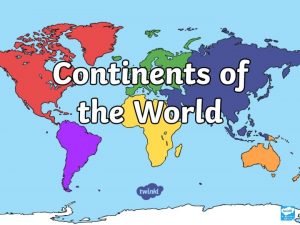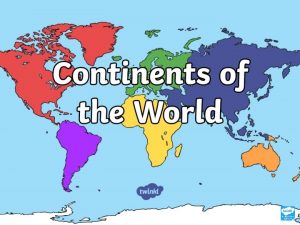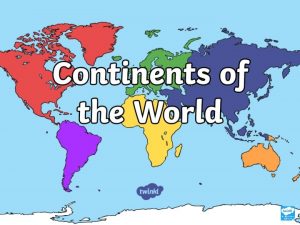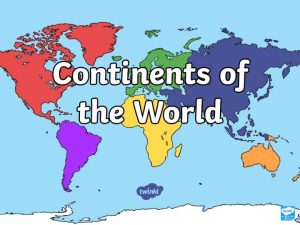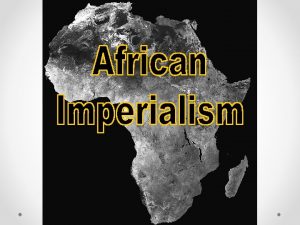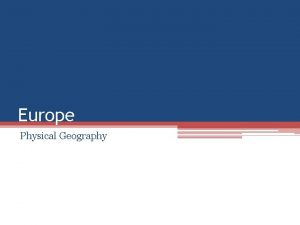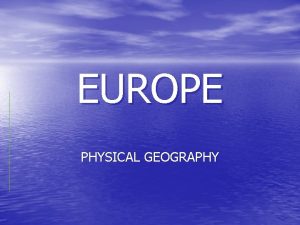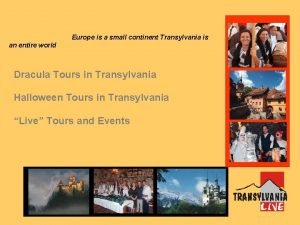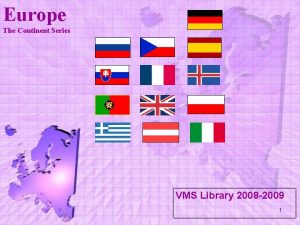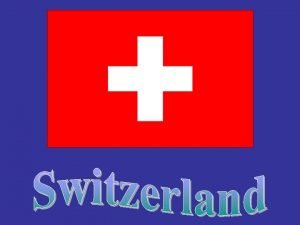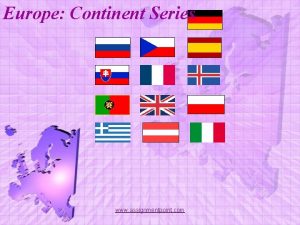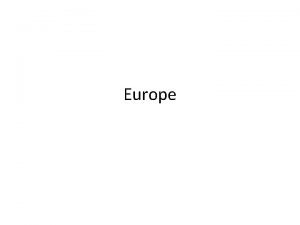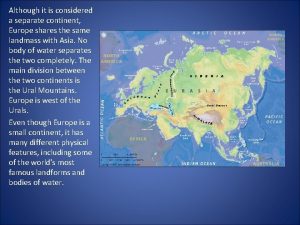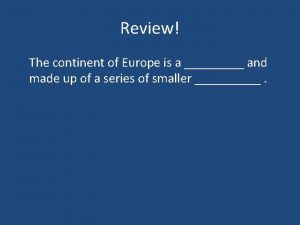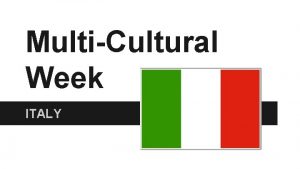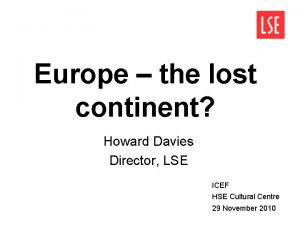The Continent of Europe 1 Europe is a

















- Slides: 17


The Continent of Europe 1. Europe is a peninsula - an area of land with water on 3 sides 2. Almost all of Europe is within 300 miles of coastline 3. What hemisphere? - Northern Hemisphere 4. The giant landmass of Europe and Asia is called Eurasia

Peninsulas and Islands • Europe is a huge peninsula with smaller peninsulas branching off from it • Large Islands: Great Britain, Ireland, Iceland • Peninsulas and islands have affected history causing people to be separated and many cultures to develop • Made up of more than 40 countries



4 Regions • • Plains and Uplands Alpine Mountain System Northwestern Highlands Siberia How was this created? Fiords in Norway - long, narrow inlet with steep sides, created by glaciers

Plains and Uplands North European Plains – Southern England France foot of Urals – Rich soil = productive farmland • Loess (fertile, dust-like soil) is blown across plains • Cleared forests and prairies for farmland grazing – Deposits of coal, iron ore, and other minerals – High population density Why would so • Central Uplands many people live in this area? – Mountains and plateaus (raised flat area of land – Soil is too rocky for farming, but it is rich in minerals like coal and it is good for grazing

Morning fog in the German plains Central Uplands in Germany

Alpine Mountain System • Series of high mountain ranges • Spain to the Balkan Peninsula • Includes the Pyrenees (between Spain and France) and the Carpathians (Central Europe) • Highest peak is Mt. Blanc in France Mt. Blanc and Rébuffat platform


Northwestern Highlands • Scandinavia and northern parts of France and Great Britain • Low population density • Severe climate • Thin soil = poor farming Northern Norway Scottish Highlands

Rivers • Highlands = a great source for many rivers – Melting glaciers from into steams rivers • Rhine – Switzerland to the North Sea • Most of Germany's vineyards owe their existence to the Rhine river.

Rhine River • The castles are an unmistakable feature of the Rhine landscape. Their founders were feudal overlords, who built them to protect their lands from marauders. • http: //www. castles. org/castles/Europe/Centr al_Europe/Germany/germany 1. htm

Danube River • • 2 nd longest river in Europe Germany Black Sea Connects the Mediterranean to central Europe Navigable (ships can travel on it) year round

Volga River • Longest river in Europe (Russia) • Canals and tributaries link Arctic Ocean, Baltic Sea, and Caspian Sea via the Volga River • Frozen 3 months • Many Russian rivers are polluted from Industrial runoff

Importance of Rivers • Transportation corridor – links places and transports goods • Provides for fertile lands • Hydroelectric power – Water turbines (generate electricity) – Supplies almost all of Norway’s electricity

 Divergent convergent transform
Divergent convergent transform Continent continent convergent
Continent continent convergent ưu thế lai là gì
ưu thế lai là gì Tư thế ngồi viết
Tư thế ngồi viết Các châu lục và đại dương trên thế giới
Các châu lục và đại dương trên thế giới Bổ thể
Bổ thể Nguyên nhân của sự mỏi cơ sinh 8
Nguyên nhân của sự mỏi cơ sinh 8 độ dài liên kết
độ dài liên kết Từ ngữ thể hiện lòng nhân hậu
Từ ngữ thể hiện lòng nhân hậu Tư thế ngồi viết
Tư thế ngồi viết Phối cảnh
Phối cảnh Chúa yêu trần thế
Chúa yêu trần thế Một số thể thơ truyền thống
Một số thể thơ truyền thống Sự nuôi và dạy con của hổ
Sự nuôi và dạy con của hổ Diễn thế sinh thái là
Diễn thế sinh thái là Công thức tính thế năng
Công thức tính thế năng đặc điểm cơ thể của người tối cổ
đặc điểm cơ thể của người tối cổ Tỉ lệ cơ thể trẻ em
Tỉ lệ cơ thể trẻ em


















